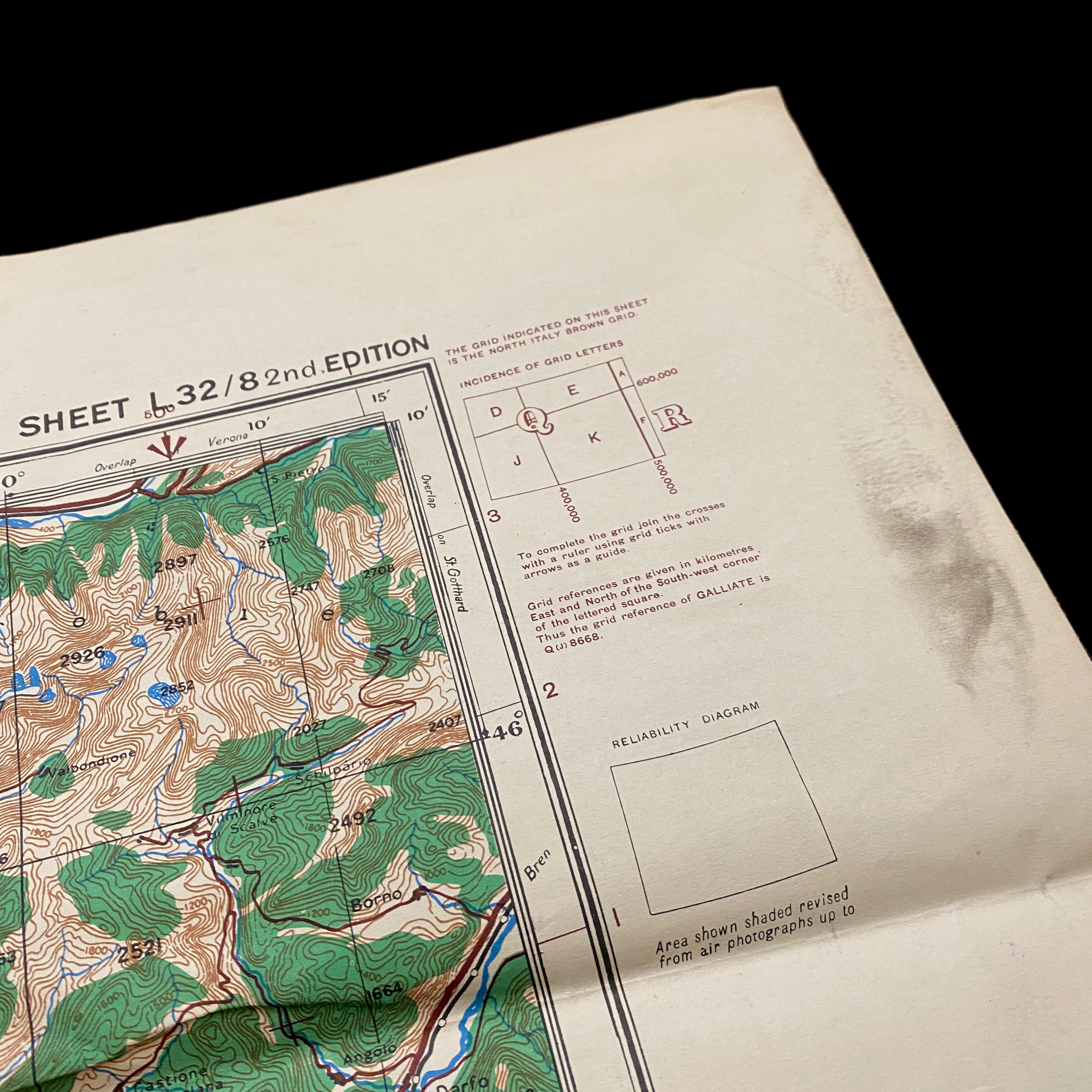RARE! WWII 1942 RAF Bomber Command MILAN Italy Bombing Raid Navigational Target Map


















RARE! WWII 1942 RAF Bomber Command MILAN Italy Bombing Raid Navigational Target Map
Comes with hand-signed C.O.A.
*On the night of 12/13 August, Bomber Command launched its heaviest raid on Milan and any Italian city. 504 bombers (321 Lancasters and 183 Halifaxes) took off from English bases, and 478 of them reached Milan and dropped 1,252 tons of bombs (670 explosive bombs and 582 incendiary bombs), including 245 4,000-lb blockbusters and 380,000 incendiary devices, over the city. This was the heaviest single air raid ever suffered by an Italian city.
This incredible and museum-grade 2nd edition 1942 dated MILAN navigational target raid map was used by bombing raid navigators on one the main economic and industrial center in Italy, and the country's second-largest city. During WWII Milan was subjected to heavy bombing during World War II, being the most bombed city in Northern Italy and one of the most bombed cities in the country.
During the first years of war (until 1943/1944), Milan could only be reached by bombers of the RAF Bomber Command coming from England. The first raids were precision bombings carried out by small numbers of planes, mainly with industrial objectives, which caused little damage and few casualties. The first raid happened in the night of 15/16 June 1940, five days after Italy entered the war; a few buildings were hit and one person was killed. On the following night, eight aircraft dropped bombs on the Caproni plant, causing little damage.
During one raid on Milan the Milan cathedral was designated as the 'aiming point' for the area bombing. Although the cathedral was not hit during this raid, the decision to center the raid on a major religious building drew criticism from superiors. Another raid with 71 planes was planned for the following night, but poor weather dispersed the formation and only 39 bombers reached Milan (six were lost, and many others randomly dropped their bombs on several towns and villages of Lombardy), causing little more damage. Two more people were killed, and thousands started to flee from the city.
After a pause of nearly four months, Milan suffered a new area bombing on the night of 14/15 February 1943, when 142 Lancasters dropped 110 tons of explosive bombs and 166 tons of incendiary bombs over the city. Several factories were damaged, including Alfa Romeo, Caproni, Isotta Fraschini and Breda; the Milano Centrale railway station and the Farini marshalling yard were also hit. Residential areas were also badly damaged, with 203 houses destroyed, 596 heavily damaged and over 3,000 slightly damaged; the headquarters of Corriere della Sera suffered heavy damage. Several historical buildings suffered various extents of damage, including the Royal Palace of Milan, the Teatro Lirico, the Basilica of San Lorenzo, San Giorgio al Palazzo and the Church of Santa Maria del Carmine. To extinguish the many fires, it was necessary to call firefighters from all neighbouring provinces and even from Bologna. 133 people were killed in the attack, 442 were wounded and over 10,000 were left homeless. Schools had to close down, and more citizens evacuated the city. The only RAF loss was one Lancaster shot down.